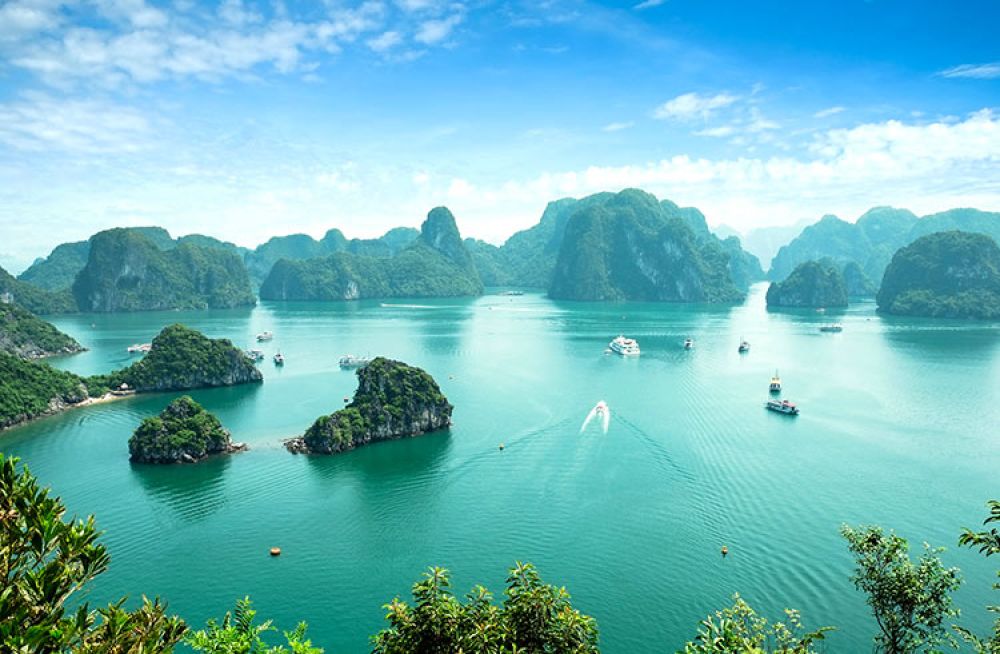

Renowned for its emerald waters and thousands of towering limestone islands topped with rainforests, Ha Long Bay is a UNESCO World Heritage site and one of the prime travel destinations in Vietnam. The bay is situated in the north of the country, in the Quang Ninh province, and spans an area of around 1,553 square kilometers.
The history of tourism in Ha Long Bay can be traced back to the early 19th century when French explorers and colonial administrators began to document the extraordinary beauty of the region. However, it was not until the late 20th century that Ha Long Bay became a notable tourist destination. After the end of the Vietnam War in 1975 and subsequent economic reforms in the 1980s and 1990s, Vietnam started to open up to foreign visitors, and Ha Long Bay increasingly caught the attention of international travelers.
A crucial moment in the developmental trajectory of Ha Long Bay's tourism was its designation as a World Heritage Site by UNESCO in 1994. This recognition helped to accelerate its popularity, drawing even more visitors from around the globe mesmerized by its natural beauty and geological significance. The designation also promoted a focus on the conservation of the area's unique biodiversity and landscapes.
As the flow of tourists began to increase, so did the infrastructure and services around Ha Long Bay. The late 1990s and 2000s saw a surge in the development of hotels, restaurants, and docks to accommodate cruise ships. Tour operators began offering a variety of experiences, including boat tours, kayaking expeditions, and visits to caves and grottoes, each adding to the allure of Ha Long Bay as a versatile tourist destination.
In recent years, sustainable tourism has become a significant focus, aiming to protect the environment while continuing to share its wonders with travelers. Eco-friendly practices and policies have been integrated, and many tour operators now highlight their commitment to responsible tourism. Additionally, there is a trend towards luxury travel experiences in Ha Long Bay, with high-end cruises and private tours that offer unique vantage points to witness the bay's splendor.
More recently, adventure tourism has also taken off, with rock climbing, trekking, and scuba diving gaining popularity among tourists seeking active experiences. Cultural tourism has blossomed concurrently, providing visitors with deeper insights into the lives of local communities living on and around the bay.
Looking into the future, Ha Long Bay is expected to continue evolving as a destination, balancing the needs of tourism growth with the imperative of conserving its precious natural environment. Community-based tourism and partnerships between conservation efforts and the tourism industry are viewed as key strategies for achieving sustainable tourism development in Ha Cam Bay.
The remarkable history of tourism in Ha Long Bay is a testament to Vietnam's growing appeal as a leading destination in Southeast Asia. It has gracefully transitioned from a hidden gem to a bucket-list destination for travelers worldwide while facing the ongoing challenge of preserving its pristine beauty for future generations.